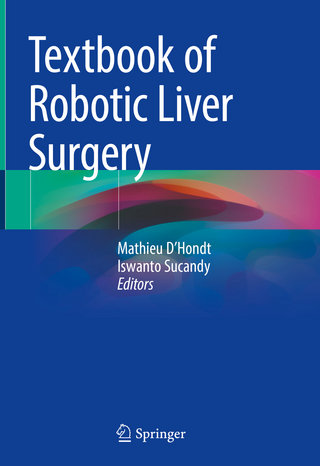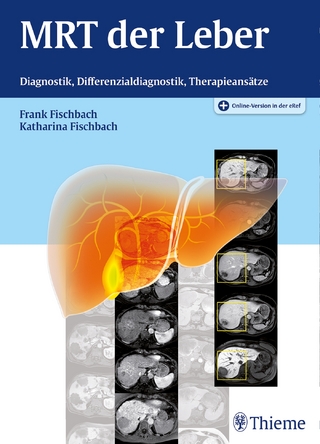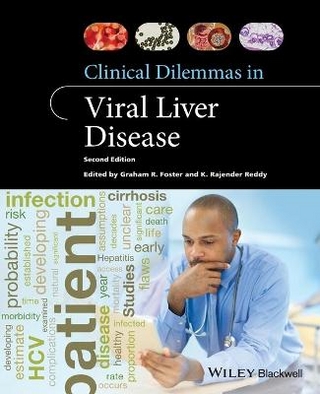
Handbook of Radioembolization
Crc Press Inc (Verlag)
978-1-4987-4201-6 (ISBN)
Alexander S. Pasciak, PhD, earned a BS in electrical engineering at the University of Washington, MS in health physics and PhD in nuclear engineering at Texas A&M University. In 2010, Dr. Pasciak completed a 2-year diagnostic medical physics residency at the University of Texas MD Anderson Cancer Center after which he worked for 5 years as a diagnostic medical physicist at the University of Tennessee Medical Center in Knoxville, Tennessee. Dr. Pasciak maintains a position as an associate professor of radiology at the University of Tennessee and is concurrently pursuing his MD degree at the Johns Hopkins University School of Medicine in Baltimore, Maryland. Dr. Pasciak is active in multiple research endeavors in the fields of interventional radiology and medical physics, and he has published papers in high impact journals. Dr. Pasciak has published 35 articles in peer-reviewed medical journals, presented 62 research abstracts at national meetings, has written 6 book chapters, and has filed 2 patents. He currently serves as principal investigator on three externally funded research grants involving radioembolization. Dr. Pasciak is certified by the American Board of Radiology (ABR) in diagnostic medical physics and is Mammography Quality Standards Act (MQSA) qualified. J. Mark McKinney, MD, earned a medical degree at Loma Linda University School of Medicine in California where he completed a diagnostic radiology residency and interventional radiology fellowship. Dr. McKinney joined the Mayo Clinic in 1993. While at Mayo Clinic in Jacksonville, Florida, he developed the interventional radiology fellowship, mentored residents, made numerous presentations, and authored more than 60 peer-reviewed articles, abstracts, and book chapters. From 2008 to 2012 Dr. McKinney was Chair of Radiology at the University of Tennessee Medical Center and initiated the University of Tennessee interventional oncology radioembolization program. Dr. McKinney returned to Mayo Clinic in 2012 and is serving as Chair of Radiology. Dr. McKinney is an associate professor of radiology in the Mayo Clinic College of Medicine. Dr. McKinney is a recent past president of the Association of Program Directors in Radiology and is involved in the new interventional radiology residency program. Yong C. Bradley, MD, is an ABNM and ABR-certified nuclear medicine subspecialist at the University of Tennessee Medical Center in Knoxville, Tennessee. He completed his residency training in radiology at Tripler Army Medical Center in Honolulu, Hawaii, and subsequently completed a 2-year fellowship in nuclear medicine at Brooke Army Medical Center in San Antonio, Texas. Dr. Bradley is a former chief of radiology and nuclear medicine and molecular imaging at the Brooke Army Medical Center, Wilford Hall Medical Center, and San Antonio Military Medical Center. Dr. Bradley has been interested in cancer imaging and therapy for over 20 years. He has been involved in positron emission tomography (PET) and PET/computed tomography (CT) imaging since 1998, when he was first introduced to PET along with radioimmunotherapy. Presently, his interest has been concentrated in liver radioembolization.
INTRODUCTION. Introduction to radioembolization for the treatment of non-resectable liver cancer. PATIENT SELECTION AND TREATMENT PLANNING. Treatment options for patients with primary and secondary liver cancer: An overview of invasive, minimally invasive and non-invasive techniques. Treatment planning part I: Vascular considerations. Treatment planning part II: Procedure simulation using 99mTc-MAA. Treatment planning part III: Dosimetric considerations in conventional lobar therapy. Treatment planning part IV: Radioembolization in segmentectomy, lobectomy and future liver remnant hypertrophy. TREATING PATIENTS WITH RADIOEMBOLIZATION. Radiation safety concerns associated with preparing the dose, treating and releasing the patient and managing radioactive waste. The radiation biology of radioembolization. Glass and resin microspheres: An analysis on a microscopic and macroscopic level. FOLLOWING PATIENTS TREATED WITH RADIOEMBOLIZATION. Quantitative post-radioembolization imaging using Bremsstrahlung SPECT. Quantitative post-radioembolization imaging using PET/CT. Image-based 3-dimensional dosimetry following radioembolization. Diagnostic reporting using post-radioembolization imaging. Using post-treatment imaging in the medical management of patients treated with radioembolization. The potential utility of serial therapy in radioembolization: A radiation biology analysis. NEW HORIZONS. Future directions in radioembolization for intrahepatic and extrahepatic treatment of disease
| Erscheinungsdatum | 10.01.2017 |
|---|---|
| Reihe/Serie | Imaging in Medical Diagnosis and Therapy |
| Zusatzinfo | 29 Tables, black and white; 33 Illustrations, color; 130 Illustrations, black and white |
| Verlagsort | Bosa Roca |
| Sprache | englisch |
| Maße | 178 x 254 mm |
| Gewicht | 852 g |
| Themenwelt | Medizinische Fachgebiete ► Innere Medizin ► Hepatologie |
| Medizin / Pharmazie ► Medizinische Fachgebiete ► Onkologie | |
| Medizinische Fachgebiete ► Radiologie / Bildgebende Verfahren ► Radiologie | |
| Naturwissenschaften ► Physik / Astronomie ► Angewandte Physik | |
| ISBN-10 | 1-4987-4201-7 / 1498742017 |
| ISBN-13 | 978-1-4987-4201-6 / 9781498742016 |
| Zustand | Neuware |
| Informationen gemäß Produktsicherheitsverordnung (GPSR) | |
| Haben Sie eine Frage zum Produkt? |
aus dem Bereich


